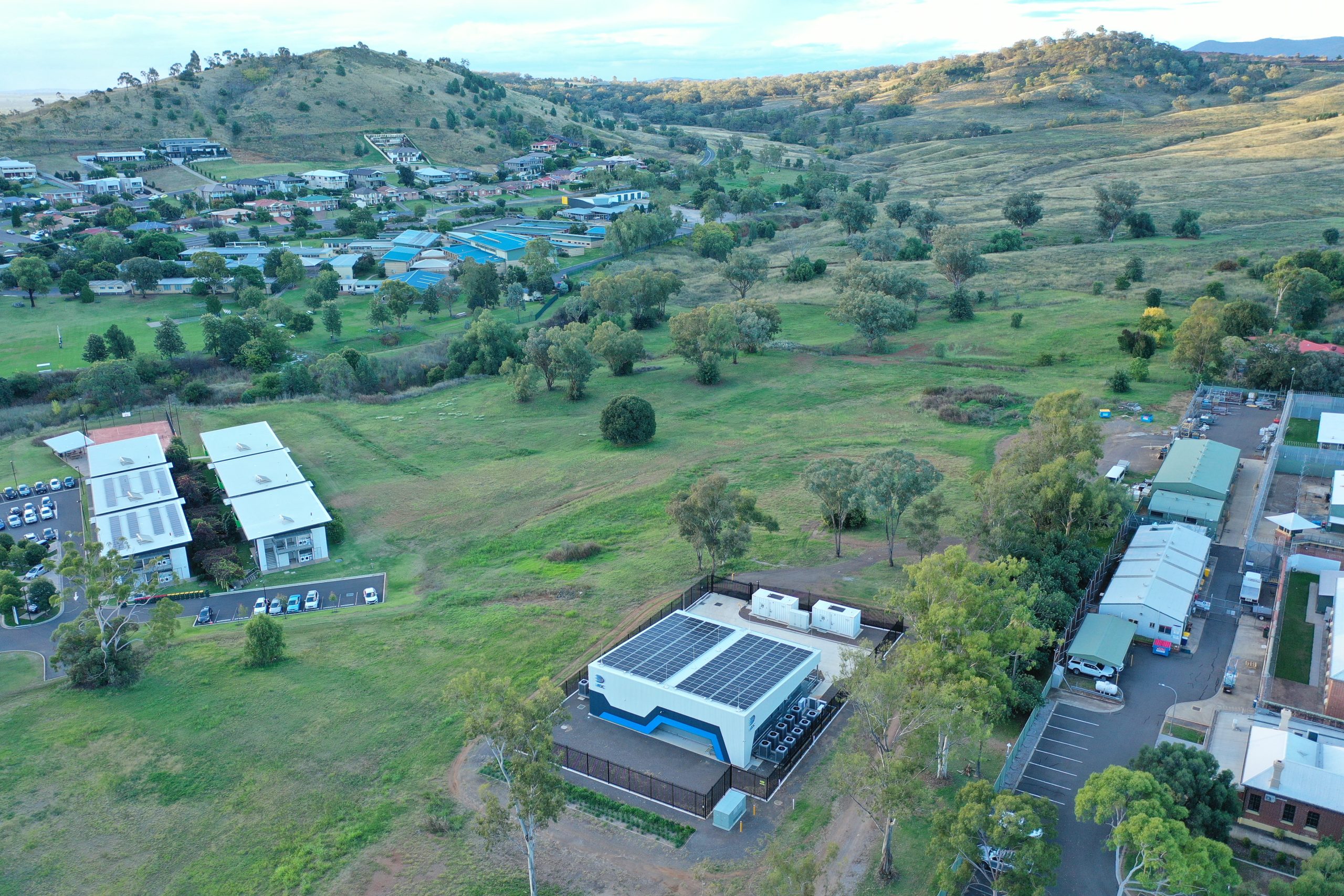On the Edge

By: Ian Jansen, CDO, Leading Edge Data Centres
BIGGER THAN CLOUD
Having spent much of my career advocating for cloud and migrating infrastructure into hyperscalers like Amazon, Google and Azure. I find myself at an interesting juncture in my understanding of the future. Until recently, I never really thought about the next internet, I just assumed it would be bigger, less secure, faster and that most of the transformation activity would take place at the data and higher application layers like AI and Automation etc. But what if these technologies cannot reach their full potential without the actual internet changing?
I’ve come to realise that the tectonic plates of the internet are quickly moving. It will herald the re-architecture of the internet as we know it. My research and increasing awareness of all the technologies that are loosely described as Edge was confirmed when I stumbled upon an interview with Michael Dell dating back to 2018 when he first claimed that Edge would be bigger than cloud.
Edge compute is defined as the trend of moving cloud-scale computing resources closer to the end devices utilising them. This re-architecting of the Internet promises to make current applications better. More importantly it will enable a whole new set of use-cases that utilise real-time analysis, and are situationally aware and autonomous.
The key difference and reason for rearchitecting the internet, is that our future internet will be largely operated by machines, not humans. They require low-latency access to both compute and data in data centres. Looking ahead, as machines increasingly become the “end-user” of datacenter or network output, the demand for applications requiring significantly lower latency will increase.
Today’s Internet has been built for human or business consumption (email, video/streaming, social media, websites) and grew up with the record once/stream many times model. The next Internet will be built under the assumption that data and computing resources will both be generated and consumed by machines (AI, drones, sensors, robots, etc) and thus will need to be much faster and decentralised for low latency. Latency is a “nice to have today” but will become critically important over the next 2-5 years.
The effect of 5G will also be profound – it holds the promise of much higher bandwidth, much lower latency, and significantly increased connection density compared with 4G. However, 5G requires compute to be close to the towers. It operates on a high-frequency band of the wireless spectrum and cannot have long fibre run back to metro data centres (which is the case currently). High-frequency waves also have a harder time travelling over distance and through objects requiring 5G to be built on small cell site technology where proximity to Edge data centres will be key.
5G will supercharge the Internet of Things (IoT) with billions of sensors, applications and enhanced user experiences. Managing the complexity of real-time data with existing centralised compute, storage and networking infrastructures will become more and more difficult. The sheer volume of data that humans and our machines generate will mean that centralising storage will no longer be possible. Data must become distributed and locating the right data at the right place (on the Edge) rather than central aggregation will become the norm.

In support of this belief I’m working with Leading Edge Data Centres to prepare Australia and regional Australia for this change. Leading Edge is deploying regional data centres and has its genesis anchored in the ways that this can bring economic, social and community benefits to regional and metropolitan Australia.
WHY IS THIS IMPORTANT?
Regional Migration will occur as the cost of real estate and living in crowded cities increases. ABC captured this in a recent article detailing how more people will live in the country and work from home after COVID-19. Regional towns and cities without adequate digital infrastructure will be severely constrained as workers rely on video conferencing and internet performance. Regional migration will also alleviate pressure on metropolitan infrastructure particularly schools, transport, housing and hospitals.
Regional Business have lower operational costs than metropolitan business and experience greater loyalty from employees who are less likely to job hop. Empowering regional businesses to compete domestically and internationally in a digital context is a game changer for regional communities.
Digital infrastructure also allows these communities to become more economically resilient with local people earning and spending their income locally. This reduces the dependence on Government support and creates communities that are less dependent on tourism in a post COVID-19 world. This resilience extends to small and medium businesses that have historically hosted their servers and data locally. Most regional businesses do not host their infrastructure in fit for purpose tier-3 Data Centres – this exposes these businesses to cyber risk and technical outages. Significantly, this has led to many regional businesses (that produce 67% of Australia’s exports) having poor or no disaster recovery capability, exposing them to unnecessary risk.
Decentralising a workforce also has benefits for corporates wanting to ensure they have mitigated future risks with pandemics and natural disasters.
HOW?
Building tier-3 certified edge data centres not only generates regional jobs but prepares Australia for the next Internet. One that will no longer only be centralised in metropolitan areas and where machine use will dominate its volume and interaction; one that will increasingly keep different data in different locations as it seeks to create performance efficiencies at a scale never experienced before.
These are the data centres that will power 5G and IoT, host compute and storage infrastructure of the future. More importantly it will become a network hub for fibre optic networks from many providers that are the lifeblood of the internet and a connected world.
The choice of optimal regional locations balances the needs of energy, fibre optic networks and proximity to the NBN. With over 20 regional locations secured, Leading Edge Data Centres is able to rapidly deploy tier-3 edge data centres in a “cookie cutter” way to each regional site. The data centres were jointly designed by Leading Edge Data Centres for Australian conditions with innovations like the solar shield to protect, generate power and reduce power consumption.
The sites are strategically located close to energy sources and existing fibre optic networks. This increases the speed that they can be deployed as fibre connectivity is incorporated into each data centre at inception. A data centre without fibre is of little value, and additional fibre connectivity can be added over time.
Proximity to the NBN was also key. By locating the sites close to the NBN points of interconnection this valuable Australian asset can be supercharged. This can be done by connecting the existing “last mile” NBN infrastructure to super high-speed fibre networks for backhaul and horizontally meshed networks from multiple providers.
Emergency Management will also become increasingly important to Australia with increased volatility brought about by climate change. All locations have been selected in close proximity to emergency services such as the RFS and Emergency Response Centres.
The architecture of the data centres does not negate the use of metro based hyperscalers like Amazon(AWS), Google(GCP) and Microsoft(Amazon). Instead, it complements access to these providers with innovative services that make these directly accessible to communities and regional businesses. It also allows business to create hybrid cloud solutions that use the right approach for the right workload. This reduces the cost and complexity of connecting to these services and meets flexible, contemporary needs.
WHEN?
There are over 20 locations secured, pre-selected and shovel ready with detailed inventory completed for power and existing fibre optic networks (14 in NSW). The first of these data centres will be available in November 2020 (Newcastle) with others following in the early months of 2021. The velocity of deployment will be based on demand and accelerated public/private collaboration with Government.
REFERENCES
-
National Rural health Alliance. https://www.ruralhealth.org.au/
-
Australian Government Department of Infrastructure, Regional Development and Cities data https://www.infrastructure.gov.au/
-
Regional Australia Institute. http://www.regionalaustralia.org.au/home/
-
Diagram adapted from Cowen’s Ebb and Flow
Also published at: https://www.linkedin.com/pulse/edge-new-internet-ian-jansen









